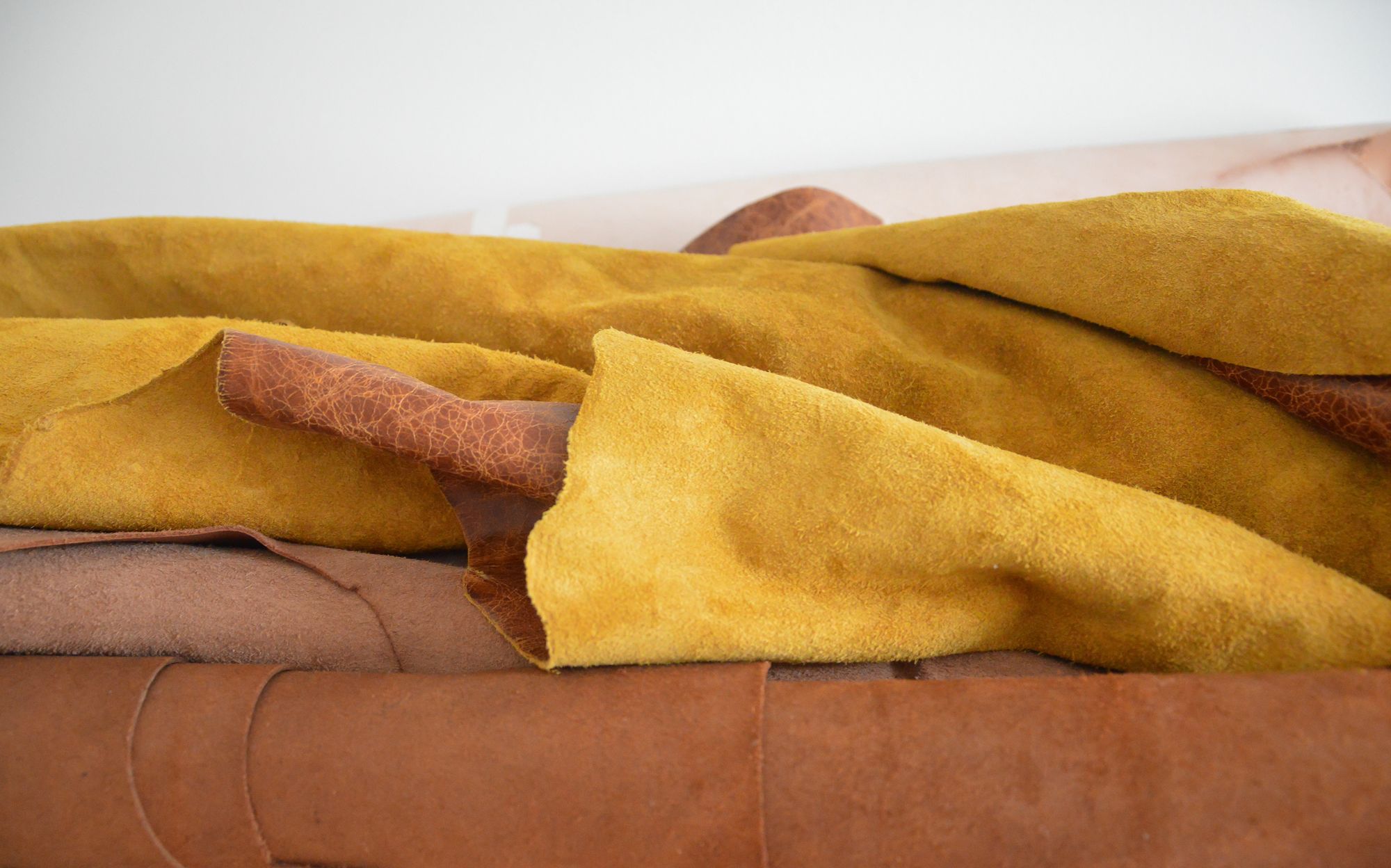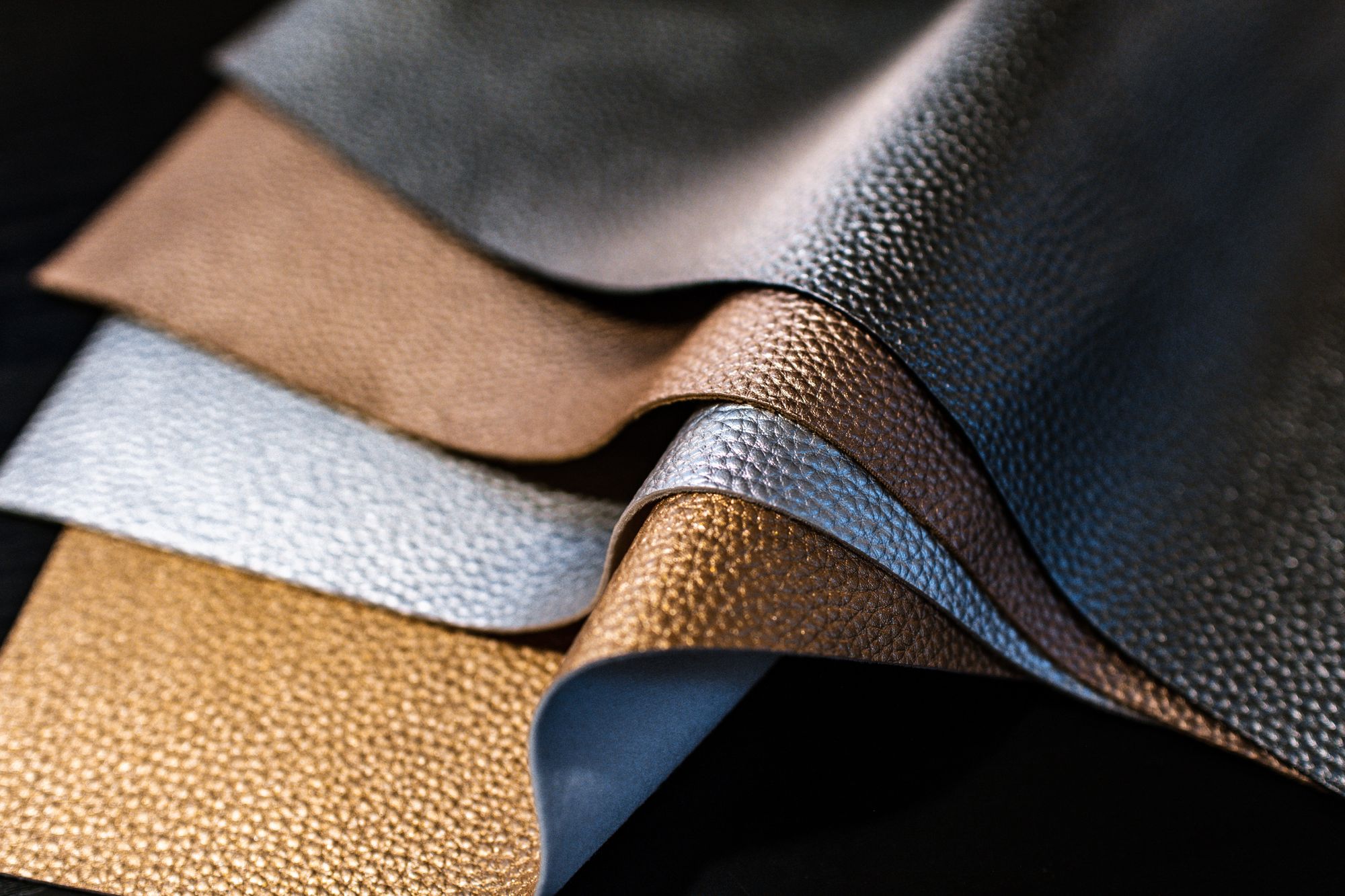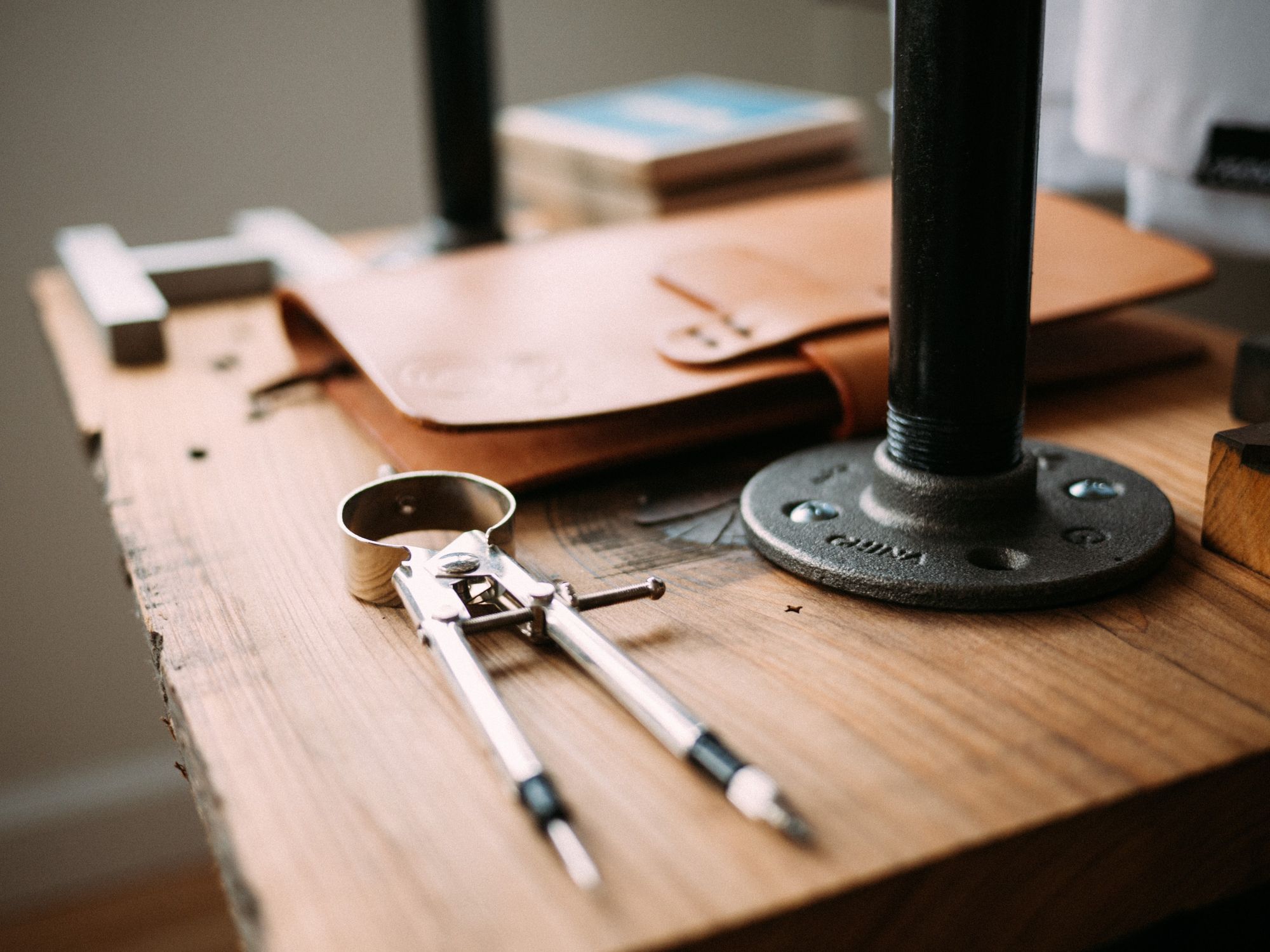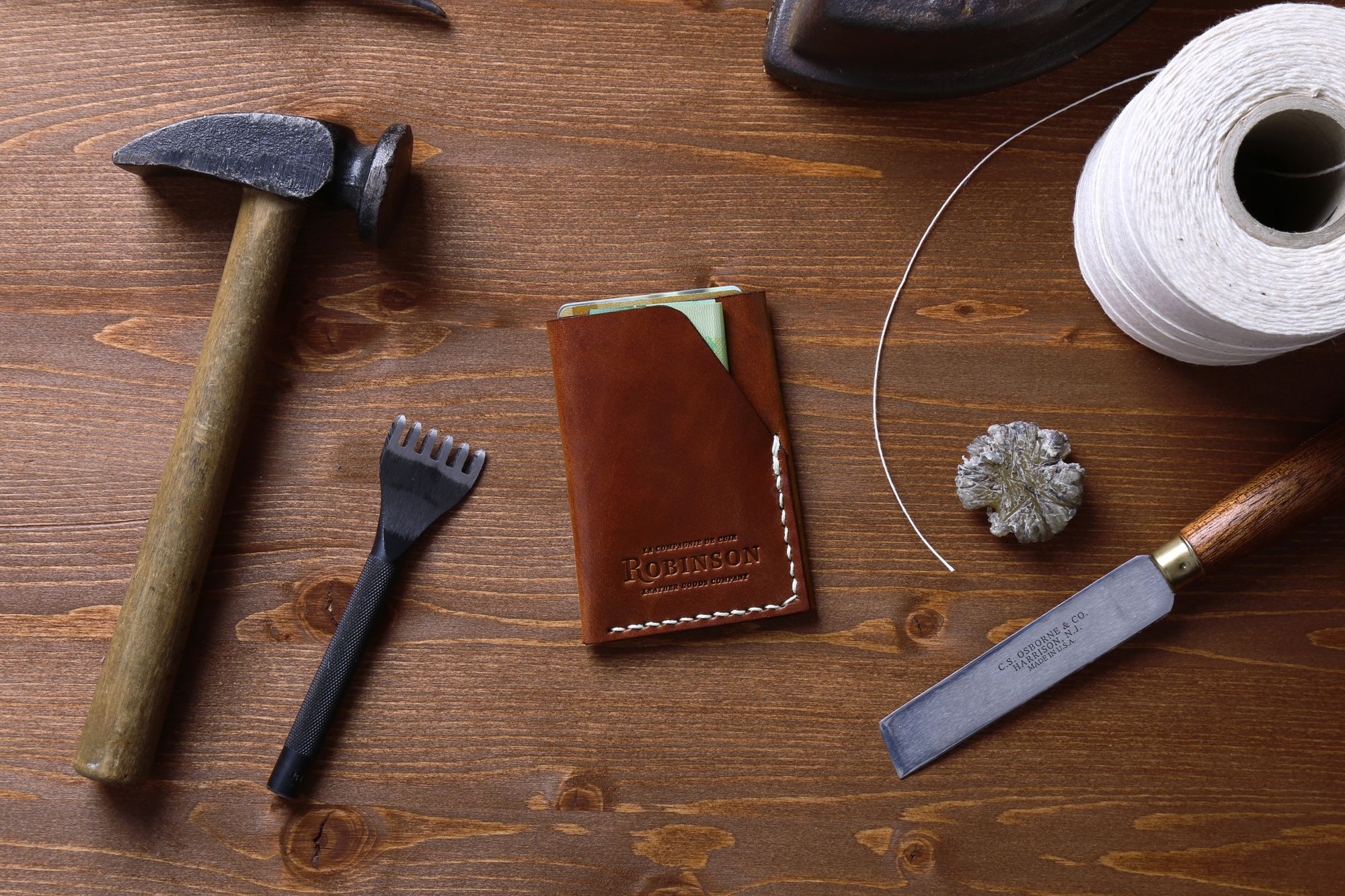Budgeting is an important tool for leather manufacturers because it helps them to plan their operations more effectively and efficiently. A good budgeting plan can help manufacturers to control costs, manage cash flow, and make informed decisions about investments in technology, equipment, and personnel.
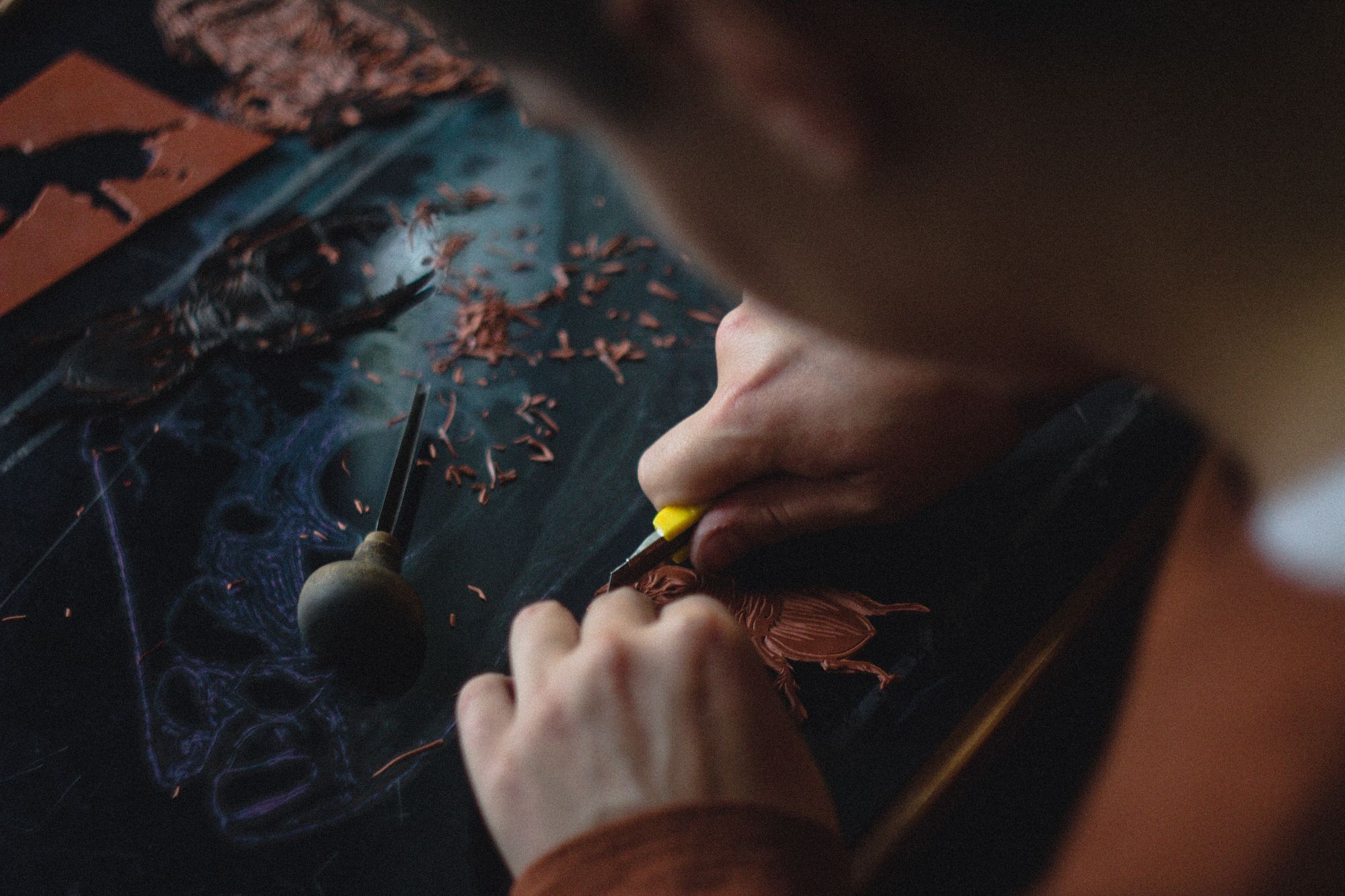
This article covers the following:
- Setting a Budget for Leather Manufacturing
- Analyzing Costs of Leather Manufacturing
- Tracking Expenses in Leather Manufacturing
- Maximizing Profit Margins in Leather Manufacturing
- Investing in Leather Manufacturing Equipment
- Reducing Overhead Costs in Leather Manufacturing
- Establishing Financial Goals for Leather Manufacturing
- Assessing Return on Investment in Leather Manufacturing
- Managing Cash Flow in Leather Manufacturing
- Financial Planning for Leather Manufacturing Projects
Setting a Budget for Leather Manufacturing
Setting a budget for leather manufacturing is essential for running a successful business. The budget should include all the costs associated with the production and overhead costs.
It is important to account for not only the direct costs of procuring and processing the leather but also for any indirect costs associated with running a business. When setting a budget for leather manufacturing, it is important to include the cost of raw materials.
The cost of leather can vary depending on the type of leather used and the quality of the skin. Leather can be purchased from many different suppliers, and the price will vary depending on the supplier.
The cost of the leather should account for any additional treatments that need to be done to the leather to make it suitable for use in the manufacturing process. In addition to the cost of the leather, the budget should also include the cost of any machinery and equipment needed to produce the leather.
This can include machinery for cutting, stitching, and finishing leather. Additionally, the budget should also account for any necessary tools and supplies needed to complete the manufacturing process, such as glues, dyes, and other materials.
The budget for leather manufacturing should also include the cost of labor. This includes the wages of all the workers involved in the manufacturing process, as well as any additional costs associated with hiring and training new employees.
Additionally, the budget should also include any benefits and incentives associated with the employment of workers. The budget should also include the cost of any overhead expenses associated with running a business, such as rent, utilities, insurance, and other administrative costs.
Additionally, it is important to account for any marketing and advertising costs associated with the business, as well as any taxes and fees associated with the production and sale of leather goods.
By taking the time to create a thorough budget for leather manufacturing, business owners can ensure that their costs stay within the limits of their budget and that their business remains profitable. Having a detailed budget will also help business owners plan for future expenses and be able to anticipate any potential issues that may arise in the future.
Analyzing Costs of Leather Manufacturing
Leather manufacturing is a complex process that requires a variety of materials and skilled labor. To ensure the success of a leather manufacturing business, it is important to understand the associated costs of production.
Knowing the cost of production will enable you to determine the profitability of a leather manufacturing operation, as well as help you make decisions to improve efficiency and reduce costs.
The cost of production for leather manufacturing includes both fixed and variable costs. Fixed costs are those that are incurred regardless of the amount of production and can include expenses such as rent, insurance, and administrative costs.
Variable costs, on the other hand, are those that fluctuate in proportion to the amount of production. Variable costs of leather manufacturing include raw materials, labor, utilities, and other production-related expenses.
In order to understand the cost of producing leather goods, it is important to calculate the total cost of production per unit. This is done by adding the fixed costs to the variable costs and then dividing the total by the number of units produced.
This will give you the cost per unit. It is also important to factor in overhead costs when analyzing the total cost of production. Overhead costs are those that are not directly related to the production process but are necessary to operate the business.
These costs can include marketing, advertising, and other administrative costs. Once you have determined the cost of production per unit, you can then begin to analyze the efficiency of the production process.
Efficiency is measured by the total cost of production per unit compared to the value of the goods produced. If the cost of production is significantly higher than the value of the goods produced, then it may be necessary to make changes to the production process to reduce costs and improve efficiency.
By understanding the cost of production for leather manufacturing, you can make informed decisions about pricing, production, and other operational matters. Analyzing costs is an essential part of running a successful leather manufacturing business.
Tracking Expenses in Leather Manufacturing
Leather manufacturing is a complex process, and tracking expenses is an important part of the process. Tracking expenses helps companies to monitor their costs and ensure that they are not overspending.
This can be a difficult task, as leather manufacturing involves a variety of materials and processes that can add up quickly. Here is a guide to tracking expenses in leather manufacturing.
Analyze Your Supplies: Take a look at all of the supplies you use in the leather manufacturing process. This includes leather, hardware, dyes, adhesives, and any other materials you use. Make a list of all of the materials you use and the costs associated with each. This will give you a good idea of how much you are spending on supplies.
Monitor Equipment Costs: Leather manufacturing requires a variety of machines and tools. Track the cost of the machines and tools you use in the process, as well as any maintenance or repair costs that come up. This will help you to get a better understanding of your overall costs.
Track Labor Costs: Labor costs are a significant expense in leather manufacturing, so it’s important to track these costs carefully. Make sure you are tracking the hours worked by all of your employees, as well as the rate at which they are paid. This will help you to get a better understanding of your labor costs.
Track Shipping Costs: If you ship any of the leather goods you manufacture, make sure you track the cost of shipping. This includes the cost of packing materials, shipping labels, and any other associated costs.
Track Other Expenses: There are other expenses associated with leather manufacturing that you may not think about. Make sure you track things like rent, utilities, insurance, and any other business-related expenses.
Tracking expenses in leather manufacturing can be a complex process, but it is essential to ensure that your costs are in line. By taking the time to track your expenses, you can get a better understanding of your overall costs and make sure that you are not overspending. This will help you to make more informed decisions about your leather manufacturing business.
Maximizing Profit Margins in Leather Manufacturing
Maximizing profit margins in the leather manufacturing industry can be a difficult task, but with the right strategies and tactics, you can increase your profit margins and improve your bottom line.
While there are many different ways to maximize profits, the key is to focus on building a strong foundation and finding ways to increase efficiency and reduce overhead costs. The first step in maximizing profit margins in leather manufacturing is to focus on quality.
Quality materials, craftsmanship, and customer service are essential for achieving a high level of customer satisfaction and repeat business. Investing in high-quality materials, equipment, and training for your team can help ensure that the products you produce meet the highest standards.
Additionally, setting clear expectations for customer service and providing excellent customer service can also help increase profits. The second step in maximizing profit margins in leather manufacturing is to focus on streamlining the production process.
Developing efficient processes can help reduce overhead costs, increase productivity, and save time and money. Automating certain tasks, such as cutting and stitching, can help reduce labor costs and make the production process more efficient.
Additionally, eliminating unnecessary steps in the production process can also help reduce overhead costs. The third step in maximizing profit margins in leather manufacturing is to focus on finding ways to reduce waste.
By reducing waste, you can reduce costs associated with production and increase profits. For example, focusing on reducing material waste, implementing a recycling program, and using recycled materials can help reduce overhead costs.
Additionally, focusing on reducing energy use, using energy-efficient equipment, and reducing packaging costs can also help reduce overhead costs. Finally, in order to maximize profit margins in leather manufacturing, it is important to focus on building a strong marketing plan.
Developing an effective marketing strategy, including the use of digital marketing, can help increase visibility and attract new customers. Additionally, focusing on customer loyalty and offering special discounts or incentives can help increase profits.
By following these steps, you can maximize profit margins in leather manufacturing. However, it is important to remember that it takes time, dedication, and effort to build a successful business. Be sure to stay focused on quality, efficiency, and customer satisfaction in order to maximize profits and improve your bottom line.
Investing in Leather Manufacturing Equipment
Leather manufacturing is a lucrative industry with a range of applications. From clothing to furniture and accessories, leather is an incredibly versatile material and continues to be in high demand.
If you’re looking to invest in leather manufacturing equipment, there are several factors you should consider. First, consider the types of leather you plan to work with and the applications you are looking to create.
Different types of leather require different treatments, so it’s important to choose the right equipment for the job. Leather can be tanned, dyed, embossed, perforated, and finished in a variety of ways, so you’ll need to make sure you have the right tools for the job.
Once you’ve decided on the types of leather and the types of applications you’d like to produce, the next step is to research the different types of leather manufacturing equipment available.
Look into the various machines and tools you need to create the desired products, such as cutting and stitching machines, dyeing and embossing equipment, presses, and other finishing tools.
Once you’ve decided on the type of equipment you need, you’ll want to consider the cost of the equipment. Make sure to factor in the cost of maintenance and repair, as well as the cost of any special tools you may need.
You’ll also want to consider the cost of labor, as skilled leather workers are in high demand. Finally, make sure you understand the legal and safety requirements for operating leather manufacturing equipment.
Make sure you have the necessary permits and licenses and that your workers are properly trained and certified to operate the equipment. Investing in leather manufacturing equipment is a big decision and one you should make with care.
Take the time to research the types of leather and applications you plan to work with, the types of equipment you’ll need, and the cost of the equipment and labor. With the right information and preparation, you can make an informed decision that will help you create quality leather products for years to come.
Reducing Overhead Costs in Leather Manufacturing
Leather manufacturing is a complex process that requires high overhead costs. From raw materials to the finished product, there are a variety of costs associated with the production of leather goods.
Fortunately, there are a few ways to reduce overhead costs without sacrificing quality or efficiency. One way to reduce overhead costs in leather manufacturing is to invest in high-quality machinery.
High-end production machines are often more expensive upfront, but they are more efficient, reduce waste, and require less maintenance. By investing in these types of machines, you can reduce the amount of labor needed to produce leather goods and save on costs in the long run.
Another way to reduce overhead costs is to outsource certain processes. For example, if you’re producing leather bags, you may want to outsource the cutting and stitching of the bag to a third-party manufacturer.
This will reduce the amount of labor and resources that you need to produce the bags, thus reducing your costs. A third way to reduce overhead costs is to use scrap leather. Many manufacturers produce too much leather and end up throwing away excess pieces.
This is both a waste of resources and money. To reduce this waste, consider collecting and reusing scrap leather to create new products. This can help reduce the amount of new leather you need to purchase and save you money in the long run.
Finally, consider automating certain processes. Automation can help reduce labor costs and improve efficiency. This can also help to reduce errors and improve quality control. Investing in automation can be expensive upfront, but it can help to reduce your costs in the long run.
Reducing overhead costs in leather manufacturing is essential for any business. By investing in high-quality machinery, outsourcing certain processes, using scrap leather, and automating processes, you can reduce your costs and become more competitive in the marketplace.
Establishing Financial Goals for Leather Manufacturing
Establishing financial goals for leather manufacturing is essential for a successful and profitable business. It's important to have a clear understanding of how much money a business needs to make in order to stay afloat and grow.
The first step to setting financial goals is to determine the amount of capital necessary to launch the business. This includes the cost of purchasing materials, the cost of labor, and any other expenses that may be incurred.
It is important to consider the cost of purchasing and maintaining equipment, as well as the cost of insurance and licensing fees. Once a budget is established, it can be used as a guide for setting financial goals.
Once the capital is established, a business owner should set a goal for the number of products to be sold each month. This goal should be realistic and achievable. It's important to remember that leather manufacturing is a competitive industry, and it may take some time for a business to become profitable.
It's also important to consider the cost of marketing and advertising, as well as the cost of any other expenses that may be necessary for the business to stay competitive. In addition to setting goals for sales and expenses, it's important to set financial goals for growth.
This includes setting goals for increasing profits, reducing costs, and expanding the business. It's important to remember that these goals should be achievable but also challenging enough to push the business to reach its full potential.
Finally, it's important to set financial goals for retirement. This includes setting a goal for the amount of money needed to retire, as well as setting a goal for the age at which the business owner wants to retire.
Setting these goals will help to ensure that the business is financially secure in the future. Establishing financial goals for leather manufacturing is an important part of ensuring a successful and profitable business.
It's important to consider all of the costs and expenses associated with the business, as well as the goals for growth and retirement. With a clear understanding of the financial goals, a business owner can make sure that their business is successful and profitable.
Assessing Return on Investment in Leather Manufacturing
Leather manufacturing is a complex and expensive process, and it pays to be prudent when investing in any new equipment or technology. Before investing in a new piece of equipment, it is important to assess the potential return on investment (ROI) to ensure that it is the right choice for your business. Here is a detailed guide to assessing the ROI of leather manufacturing.
Calculate the Initial Investment
The first step in assessing the ROI of leather manufacturing is to calculate the initial investment. This includes the cost of the equipment, labor, materials, and any other expenses associated with the project. It is important to be thorough and accurate when calculating the initial investment, as it will be used to compare against the total return on investment.
Estimate the Potential Return
The next step is to estimate the potential return on the investment. This includes the cost of the product, the cost of labor, the cost of materials, and any additional profits that may be realized. It is important to remember that the return may be realized over a period of time and not all at once, so it is important to factor in all potential returns. 3.
Analyze the Risk
The third step is to analyze the risk associated with the investment. This includes looking at the potential for market competition, the cost of the product, the cost of labor, and any other factors that could potentially impact the returns. It is important to be realistic when assessing the risk associated with any new venture, as it can have a major impact on the potential ROI.
Calculate the Potential Return on Investment
Once the initial investment, potential return, and risk have been calculated, it is time to calculate the potential return on investment. This is done by subtracting the initial investment from the potential return and then dividing it by the initial investment.
The result is the potential ROI, which should be compared to other investments to determine the best option. By following this detailed guide to assessing the ROI of leather manufacturing, businesses can make informed decisions about the best investments for their company. By taking the time to analyze the potential return, risk, and initial investment, businesses can ensure that they make the right decision for their business.
Managing Cash Flow in Leather Manufacturing
Cash flow is a crucial part of any business, and leather manufacturing is no exception. In this article, we'll discuss how to effectively manage cash flow in leather manufacturing.
The first step to managing cash flow in leather manufacturing is to understand the industry. Leather manufacturing is a complex process that involves multiple steps. From raw material procurement to production to final product delivery, there are several different stages that must be managed and tracked.
This can be a daunting task for someone who is new to the industry, but understanding the different steps involved is key to successful cash flow management. The next step is to create a budget.
A budget should be created to help you track your expenses and income, as well as plan for future expenses. This can help you determine how much money you need to cover costs associated with leather manufacturing.
Additionally, a budget can help you identify areas where you can save money or plan for future growth. Once you have created a budget, it is important to track your cash flow. This can help you identify any issues or trends that you can use to adjust your budget.
Additionally, tracking your cash flow can help you identify areas where you can improve efficiency or reduce costs. Finally, it is important to have a plan in place to manage any unexpected changes in cash flow.
This could include having a line of credit or a business loan available, as well as having a plan in place to manage any unexpected expenses. Having a plan in place can help you avoid any financial surprises and ensure that your leather manufacturing business remains profitable.
Managing cash flow in leather manufacturing can be a difficult task, but with the right planning and strategy, it doesn't have to be. By understanding the industry, creating a budget, tracking your cash flow, and having a plan in place to manage unexpected expenses, you can ensure that your business remains profitable.
Financial Planning for Leather Manufacturing Projects
Financial planning is an essential part of any business, and it is especially important when it comes to leather manufacturing projects. Leather manufacturing is a complex and costly process, and having a comprehensive financial plan in place is key to ensuring the success of the project. Here, we’ll discuss some key considerations when it comes to financial planning for leather manufacturing projects.
Estimate Project Costs:
Before you can begin to create any sort of financial plan, you must first have a clear understanding of the costs associated with your project. This includes the cost of materials, labor, and any necessary equipment or machinery. It’s important to be as accurate as possible in your estimates, as any miscalculations can have a significant impact on the success of the project.
Create a Budget:
Once you have an estimate of the costs associated with the project, you can begin to create a budget. This budget should include both fixed and variable expenses and should be tailored to the specific needs of the project. It’s also important to take into account any potential fluctuations in the cost of materials or labor throughout the course of the project.
Set Financial Goals:
When creating a budget and financial plan for a leather manufacturing project, it’s important to set some financial goals. These goals should be realistic and achievable and should serve as a benchmark for the success of the project.
Seek Financing:
Many leather manufacturing projects require some form of financing. This could be in the form of a loan, an investment, or other forms of financing. It’s important to research the various financing options available and find the one that best meets your needs.
Work with an Experienced Financial Planner:
It’s always a good idea to work with an experienced financial planner when creating a financial plan for a leather manufacturing project. A financial planner can help you to create a budget, set financial goals, and ensure that you are taking advantage of all available financing options.
Financial planning is a critical component of any leather manufacturing project. By taking the time to properly plan and budget for the project, you can ensure that it is successful and profitable. We hope this blog has been helpful in providing you with the information you need to create a comprehensive financial plan for your leather manufacturing project.
How Can Deskera Assist You?
As a manufacturer, you must keep track of your inventory stock. The condition of your inventory has a direct impact on production planning. It also has a direct impact on people and machinery use and capacity utilization.
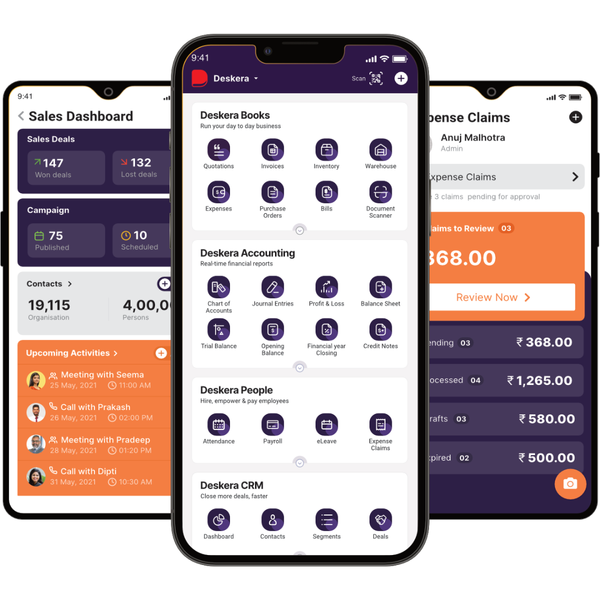
Deskera MRP is the one tool that lets you do all of the above. With Deskera, you can:
- Control production schedules
- Compile a Bill of Materials
- Produce thorough reports
- Make your dashboard
Deskera ERP is a complete solution that allows you to manage suppliers and track supply chain activity in real-time. It also allows you to streamline a range of other company functions.
Deskera Books allows you to manage your accounts and finances better. It helps maintain good accounting standards by automating billing, invoicing, and payment processing tasks.
Deskera CRM is a powerful tool that organizes your sales and helps you close deals rapidly. It enables you to perform crucial tasks like lead generation via email and gives you a comprehensive view of your sales funnel.
Deskera People is a straightforward application for centralizing your human resource management activities. Not only does the technology expedite payroll processing, but it also helps you to handle all other operations such as overtime, benefits, bonuses, training programs, and much more.
Key Takeaways:
- The leather manufacturing industry is highly competitive, with many players vying for a share of the market.
- Another trend that is likely to shape the future of the leather industry is the growing demand for personalized and customized products.
- Emerging markets such as China, India, and Brazil are becoming major players in the leather industry.
- Some of the main environmental concerns associated with leather production include the use of hazardous chemicals, high water usage, air and water pollution, and deforestation.
- The future of the leather manufacturing industry is likely to be shaped by a range of factors, including changing consumer preferences, technological advancements, and environmental concerns.
Related Articles:
